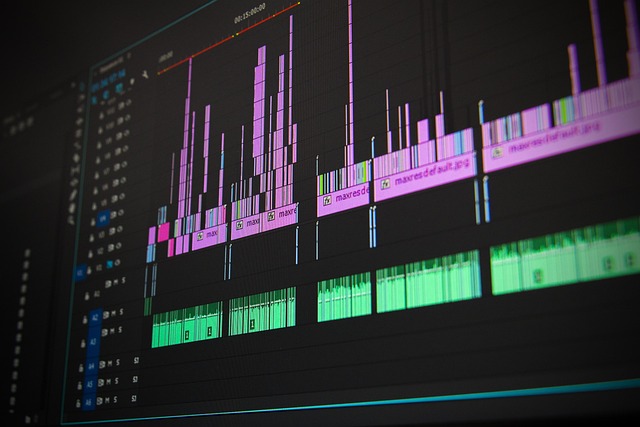Converting DivX videos to MP4 format offers enhanced streaming accessibility by leveraging MP4's universal compatibility and support for diverse codecs, while preserving DivX's superior video quality. This strategic move ensures seamless playback on popular platforms, eliminating buffering and lag. When choosing a converter, prioritize tools that deliver high-quality output and efficient conversion processes, with advanced settings for bit rates, resolution, and coding formats. Reliable software like HandBrake or Zamzar makes the process simple, resulting in an MP4 file compatible with various devices and platforms.
Looking to seamlessly stream high-quality videos online? This comprehensive guide dives into the world of video formats, focusing on the optimal choice for streaming: converting DivX to MP4. We’ll explore why this transition is beneficial, highlighting the advantages of MP4 for superior video quality. Learn about crucial features in a conversion tool and follow a step-by-step process. Additionally, we address common issues, ensuring a smooth conversion experience. Discover how to master the art of converting DivX to MP4 for an enhanced online streaming journey.
Understanding DivX and MP4 Formats: A Quick Overview

DivX and MP4 are two popular video formats, each with its unique advantages. DivX, developed in the early 2000s, is known for its high-quality compression while keeping file sizes relatively small. This makes it an excellent choice for streaming and downloading high-definition content. On the other hand, MP4 (MPEG-4 Part 14) is a more modern format that supports a wide range of video, audio, and even graphics codecs. It’s widely supported across devices and platforms, making it versatile for various multimedia needs.
When it comes to enhancing your streaming experience, converting DivX to MP4 can be beneficial. This process allows you to take advantage of MP4’s compatibility with many modern streaming platforms and devices while retaining the superior video quality offered by DivX. By converting, you ensure a seamless viewing experience for your online audience, making high-quality video content accessible to all.
Why Convert DivX to MP4 for Online Streaming?

Converting DivX to MP4 format is a smart choice for anyone aiming to stream high-quality videos online. While DivX offers excellent video compression, MP4’s wider compatibility and better support across devices makes it a more suitable option for seamless streaming experiences. MP4’s container structure allows for efficient handling of various codecs, ensuring your videos play smoothly on popular platforms and devices without the need for additional conversions or plugins. By converting to MP4, you’re taking a crucial step in optimizing your content for a global online audience.
Benefits of Using MP4 for High-Quality Video Streaming

Using MP4 for high-quality video streaming offers several significant advantages. One of its key strengths is compatibility across various devices and platforms, ensuring a seamless viewing experience regardless of whether you’re using smartphones, tablets, or computers. This universal format also facilitates easy sharing and downloading, making it perfect for online content delivery.
Converting DivX to MP4 is another benefit worth highlighting. DivX, while known for its high compression rates, hasn’t kept pace with modern streaming demands. MP4, on the other hand, allows for better preservation of video quality while maintaining smaller file sizes, ideal for efficient streaming without buffering or lag. This makes it a popular choice among content creators and users alike, especially when combined with tools that efficiently convert DivX to MP4, ensuring top-tier viewing experiences online.
Choosing the Right Conversion Tool: Features to Consider

When selecting a conversion tool for your DivX to MP4 needs, look for features that ensure high-quality output and efficiency. The ability to maintain video quality during conversion is paramount, especially when streaming as it preserves the intricate details and visuals of your content. Some tools offer advanced settings allowing you to adjust bit rates, resolution, and coding formats, giving you precise control over the final file.
Consider also the tool’s compatibility with various operating systems and devices. A versatile converter that supports multiple platforms will ensure seamless integration into your online streaming workflow. Additionally, check for batch conversion capabilities, which can significantly speed up the process, especially if you’re preparing a library of videos for streaming.
Step-by-Step Guide: Converting DivX to MP4 Successfully

Converting DivX to MP4 is a straightforward process that allows you to enjoy your high-quality videos on various platforms seamlessly. Here’s a step-by-step guide to help you through the conversion:
1. Choose a Reliable Converter: Begin by selecting a trustworthy video converter that supports DivX and MP4 formats. There are numerous free and paid options available online, ensuring compatibility with different operating systems. Some popular choices include HandBrake, VLC Media Player (with its built-in conversion feature), and online converters like Zamzar or CloudConvert.
2. Load Your DivX Video: Open the chosen converter and locate the ‘Add File’ or ‘Import’ button. Navigate to your DivX video, select it, and click ‘Open’. The converter will analyse the file and display its details. Ensure you check the settings to confirm the correct codec, resolution, and bitrate for optimal quality.
3. Select MP4 Output Format: In the conversion settings, look for the ‘Profile’ or ‘Format’ dropdown menu and choose ‘MP4’ as your output format. This will ensure compatibility with most modern devices and streaming platforms. You might also have options to adjust audio and video codecs under this menu; select those that best suit your needs.
4. Customize Advanced Settings (Optional): Depending on the converter, you may have additional settings to fine-tune the conversion process. These could include bit rate, resolution, encoding speed, and more. Adjust these as per your requirements and preferences, especially if you’re an advanced user looking for specific output qualities.
5. Start Conversion: Once you’re satisfied with the settings, click on the ‘Convert’ or ‘Start’ button to begin the conversion process. The converter will process the video, and a new MP4 file will be created in the specified location after completion.
Troubleshooting Common Issues During Conversion

When converting DivX to MP4 for online streaming, you may encounter some common issues that can disrupt your process. One frequent problem is compatibility issues with certain video codecs used in DivX files. To resolve this, ensure your conversion software supports a wide range of codecs or consider using dedicated DivX-to-MP4 converters designed to handle these formats seamlessly.
Another challenge could be the quality degradation during the conversion process. High-quality videos, like DivX, might result in larger file sizes, and some conversion tools may not preserve the original video integrity perfectly. To mitigate this, use advanced conversion settings that optimize for high-quality output without significantly increasing file size. Additionally, testing the converted MP4 file on different devices beforehand can help ensure compatibility and playback stability.
Converting DivX to MP4 is a smart move for anyone aiming to deliver high-quality video content online. This article has guided you through the process, from understanding the formats to choosing the right conversion tool and troubleshooting common issues. By adopting MP4 as your streaming format, you’ll ensure smooth playback, wide compatibility across devices, and an enhanced viewing experience for your audience—all while maintaining or improving video quality. Now, with the step-by-step guide provided, you’re equipped to seamlessly convert DivX files and start streaming in style.
